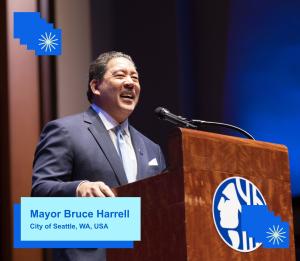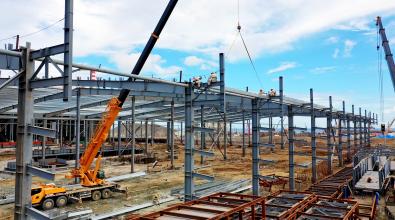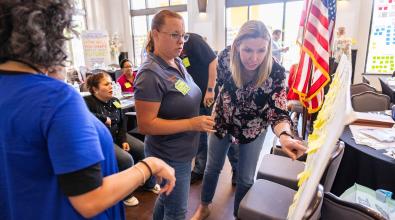 Read More
Read More
The Mayor’s Playbook: Seattle’s Bruce Harrell

Photo courtesy City of Seattle
Listen to This Article
When Seattle Mayor Bruce Harrell took office in 2022, it was with a vision both for the city he wanted to create and, critically, how he and his team would get there.
“In order to build the Seattle that we want to see, we first had to build relationships, build systems, build a team, and, most importantly, build trust,” he said at the time.
Harrell’s plan—which he calls “One Seattle”—is both a guiding principle for building a thriving city and a series of initiatives aimed at addressing the challenges that stand in the way, from public safety and downtown revitalization to affordable housing and homelessness. Fueling his strategy is Harrell's crystal-clear understanding that city residents want local government to be more efficient and effective—and his conviction that innovation is the best way to deliver that change.
"Innovation and measurement and using data are proving to be very fruitful,” he says. “And they’re helping us tell the story we want to tell.”
Now, in this first of Bloomberg Cities’ “The Mayor’s Playbook” series, Mayor Harrell spotlights some of the key ways of working that are helping realize his vision. And he offers insight into how his team is raising people’s expectations of their city—and the roles they can play in its progress.
ONE QUICK THOUGHT
Asked to provide one piece of advice to his peers around the world, Mayor Harrell said: Don’t let an election win take the urgency out of building up your own personal capabilities and skills, and finding new ideas from outside city hall. “Sometimes, once you've crossed the finish line and you've won an election, you just think people are going to bring you all of these good ideas—that they're just going to fall on your lap. But you have to be, I think, extremely intentional—and aggressive—to grab hold of new ideas.”
Proving how data can quickly transform service delivery.
A spike in gun violence and memories of the months-long, sometimes-bloody Capitol Hill Autonomous Zone were top of mind for Seattleites when Harrell became mayor. So public safety—and making public spaces open and accessible—were among his first orders of business. And that focus quickly expanded to include tackling the mounting challenges of homelessness, where the city has already made major progress.
In fact, under Harrell’s leadership, Seattle has achieved a nearly 80 percent decrease in the number of tents pitched in public spaces and, last year alone, had some 1,800 people accept shelter referrals. To Mayor Harrell, it was his push for all of city hall to use data more systematically—in order to quickly coordinate action and demonstrate that progress—that made it possible.
“We realized that without data to look at a snapshot of where we were, and without internal systems to drive change, people wouldn’t feel as though we were a city on the rise,” he says.
That's why, when Seattle launched a 12-agency effort called the Unified Care Team to better address homelessness, the team used data—from the location of encampments and their history with violence to the number of residents accepting shelter to fluctuations in associated levels of trash and debris—to inform and track every step.
Then, to fine-tune his city’s problem-solving machine, Harrell rolled out a city-wide data strategy. Developed in partnership with the Bloomberg Philanthropies City Data Alliance, the strategy unifies how agencies manage data, elevates data leaders throughout the organization, and has helped create a template for piloting and quickly scaling new initiatives. Last fall, for example, it helped the city pilot, measure, and—within a matter of weeks—scale a comprehensive new effort to clean up graffiti and conduct welfare check-ins downtown.
Altogether, this work demonstrates to city employees “that they can be the best” at delivering services and, at the same time, generates an appetite among everyone working in city hall to constantly raise their own ambition. Critically, Harrell's administration includes a 15-member innovation team (i-team)—and some 120 trained staff—feeding that appetite and helping every agency take their ways of working to the next level. "Therein lies the importance of data,” he adds. “We can look at outputs, measure it, and always see where we can do better.”
Crowding in ideas—and exporting solutions.
Another core ingredient in Harrell’s culture of continuous improvement is his explicit embrace of a “city-as-a-platform” approach to crowding in problem-solvers and solutions. It's an approach that makes especially good sense in a city like Seattle, which, as one of the world’s biggest tech hubs, is home to longtime industry leaders, such as Amazon and Microsoft, and to nearly 200 AI startups.
That begins by freely and openly sharing data on the city’s biggest challenges and where it’s falling short in addressing them. “We’re not shy about letting people look at our soft underbelly to see how well, or poorly, we’re doing,” Harrell says.
WHAT I’M WATCHING
Asked to spotlight an urban solution that’s caught his attention, Mayor Harrell brings up pioneering alternative 911 programs that have been deployed in cities such as Durham, N.C., and have inspired similar efforts in Seattle. “I've always said the best mayor is the best replicator,” he says.
One area where that data showed the city falling short was around affordability. Although Seattle is the ninth most expensive city in the United States, fewer than 40 percent of eligible residents were enrolling in benefits available to help them pay for that cost of living. So under Harrell’s leadership, the city has scaled up a one-stop shop portal created with Google.org and a slew of community organizations to ease access to those services.
So far, about 30,000 people have used the benefits system, which is just one representation of the city’s larger approach at convening residents, universities, and the private sector around city datasets in order to solve local challenges and increase accountability. In fact, when the city launched its data strategy, Mayor Harrell and Salesforce hosted a mini hack-a-thon at Tableau Software’s corporate headquarters to challenge local students, data scientists, and interested residents to kick the tires and use available open data to determine if housing permits were being awarded in line with local priorities. The verdict: They were.
Another important part of this city-as-platform approach, Harrell says, is to make sure that platform is open-sourced, so other cities can benefit from what you’re crowding in. That’s the case with the benefits portal, which has already been adopted and adapted by other cities, including Bloomington, Ind., and Charlotte, N.C. “In the public sector, you should open source as much as possible,” Harrell emphasizes.
Unlocking—and stimulating—the full potential of AI.
Yet another benefit of the city-as-platform approach is the opportunity it presents to engage experts and business leaders throughout the community in charting different ways emerging technology can improve city efforts. For Mayor Harrell, that means using the city’s financial resources to help steer AI companies toward tackling some of the city’s top challenges.
WHAT’S NEXT
Asked about an emerging solution that is energizing him, Mayor Harrell uplifts Seattle’s work to streamline development by exempting many new projects from the traditionally cumbersome design review process. “We have the gears in motion and the foundation,” he explains of how the city’s larger innovation machine is driving progress on this core priority of building more housing. “That's what we're most excited about.”
“We want to stimulate the market, to support the market, and also lead on some of our most important functions that we have as a city government,” he says.
For example, in March, the mayor launched a public-private partnership that brings the city together with an AI incubator and a local skills academy with the aim of connecting the dots between the private sector, budding talent, and local problems in need of solutions. Already, the effort has partners addressing critical issues including retail theft, complex mortgage underwriting, and burnout among ICU caregivers.
“It’s going to be amazing—the talent that we'll be able to have here—if we nurture the industry,” Harrell says.
What Mayor Harrell’s approach to innovation adds up to is more than just a set of tactics and programs. It’s a change in the culture of how the city operates. And it’s a clear testament to the power of mayoral vision to raise the level of ambition across city hall while leveling with residents—in large part, by spotlighting city data—about where there’s more to be done.
As he explains: “We’re going to measure it all and display it to them, so people know we’re doing the right thing.”

